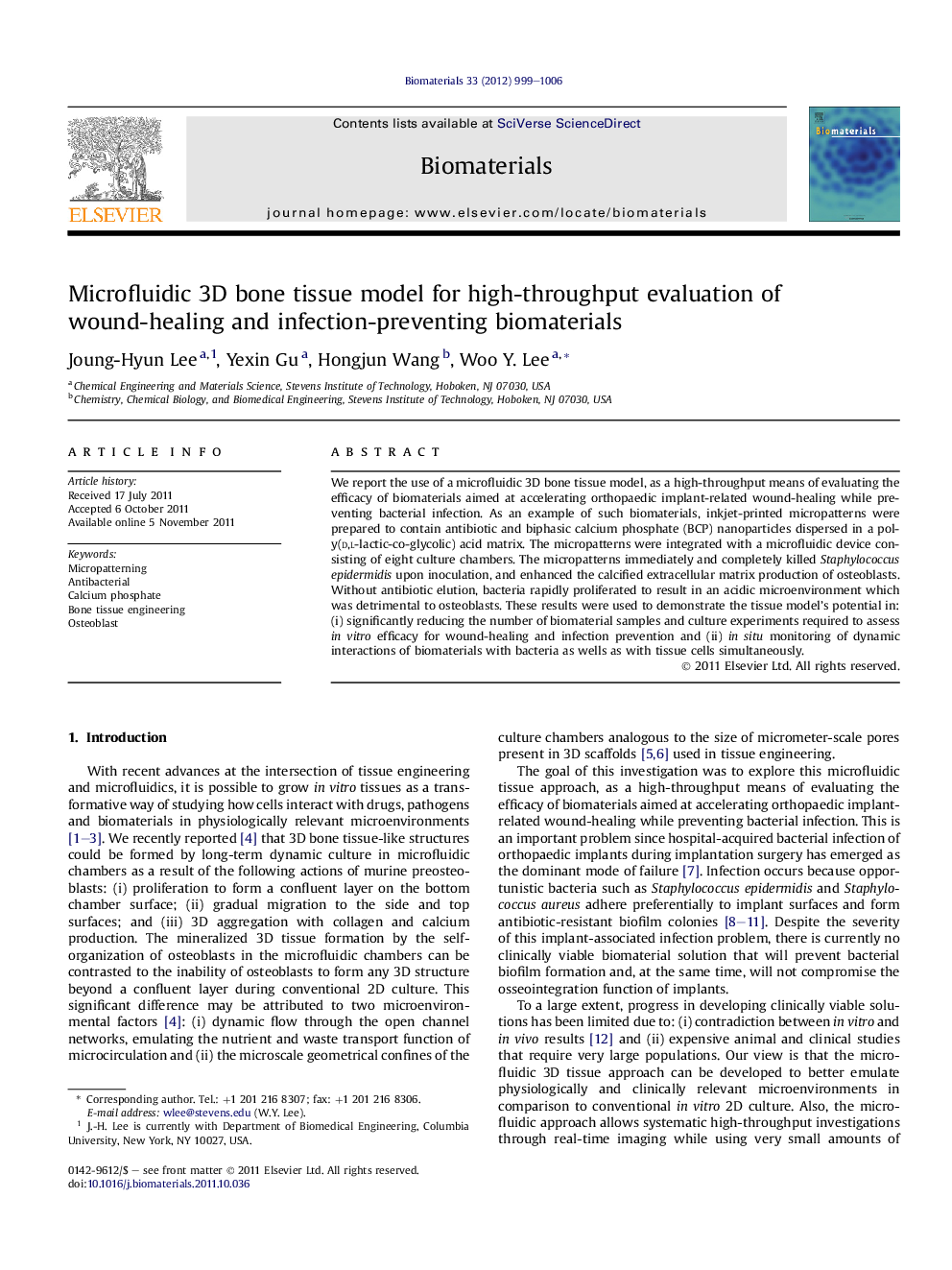| Article ID | Journal | Published Year | Pages | File Type |
|---|---|---|---|---|
| 10229412 | Biomaterials | 2012 | 8 Pages |
Abstract
We report the use of a microfluidic 3D bone tissue model, as a high-throughput means of evaluating the efficacy of biomaterials aimed at accelerating orthopaedic implant-related wound-healing while preventing bacterial infection. As an example of such biomaterials, inkjet-printed micropatterns were prepared to contain antibiotic and biphasic calcium phosphate (BCP) nanoparticles dispersed in a poly(d,l-lactic-co-glycolic) acid matrix. The micropatterns were integrated with a microfluidic device consisting of eight culture chambers. The micropatterns immediately and completely killed Staphylococcus epidermidis upon inoculation, and enhanced the calcified extracellular matrix production of osteoblasts. Without antibiotic elution, bacteria rapidly proliferated to result in an acidic microenvironment which was detrimental to osteoblasts. These results were used to demonstrate the tissue model's potential in: (i) significantly reducing the number of biomaterial samples and culture experiments required to assess in vitro efficacy for wound-healing and infection prevention and (ii) in situ monitoring of dynamic interactions of biomaterials with bacteria as wells as with tissue cells simultaneously.
Related Topics
Physical Sciences and Engineering
Chemical Engineering
Bioengineering
Authors
Joung-Hyun Lee, Yexin Gu, Hongjun Wang, Woo Y. Lee,
